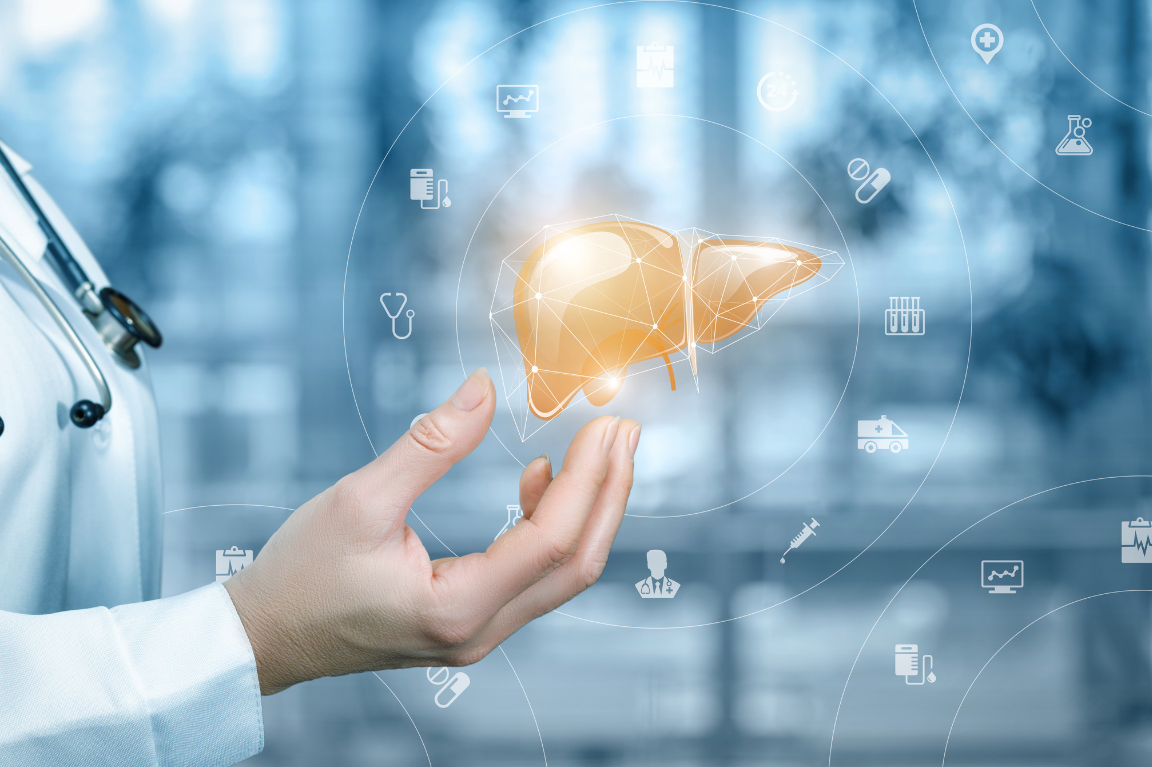
Non-Alcoholic Steatophepatitis (NASH)
Non-alcoholic Fatty Liver Disease (NAFLD) is one of the common metabolic disorders with excessive lipid accumulation in hepatocytes. It may progress into severe liver fibrosis and cancerous stage as a result of persistent inflammation, called Non-alcoholic Steatohepatitis (NASH). Traditional NAFLD/NASH models are usually genetically modified or chemically induced and lack relevant human liver or immune correlation. In contrast, we have successfully recapitulated the NAFLD/NASH features using only High-Fat High-Carbohydrate (HFHC) diet in HiMice. Interaction between human immune cells and hepatocytes during the NASH progression could then be studied intensively and potentially used in new immunotherapeutic target identification and anti-fibrotic drug evaluation.
DATA - NASH
Feature of NASH in Humanized Mice
Figure: Key NAFLD associated pathologies were recapitulated in HiMice mice fed with HFHC diet.
Ten to 12 week-old Himice were given ad libitum access to HFHC diet for over 20 weeks. (A) Absolute weight gain over 20 weeks after being normalised to weight at week 0. Data are presented as mean absolute weight gain ± SEM. Two-tailed Mann-Whitney U test; *; p < 0.05, **; p < 0.01, ***; p < 0.001. (B) Accumulation of abdominal fat and evidence of severe liver damage in HiMice mice fed the HFHC diet for 20 weeks. (C) Comparison at week-20 of NAFLD score and % area of liver fibrosis in HiMice mice fed the chow or HFHC diet. Data are presented as mean ± SEM. Two-tailed Mann-Whitney U test; ***; p < 0.001. (D) Longitudinal effect of HFHC diet on liver. HiMice fed the HFHC diet were sacrificed at weeks 0, 4, 8, 12, 16 and 20 after initiating the diet. The liver was sectioned and stained using H&E, Fast-green/Sirius red and Oil red. Scale bar: 100 μm. Source: Her et al. 2020. Front. Immunol. 11:580968.
NASH - Liver’s Immune Profiling
Increased intrahepatic infiltration of human immune cells in HiMice fed HFHC diet at week 20 post diet treatment.
Figure. Increased intrahepatic infiltration of central memory and effector memory CD4+ and CD8+ T cells in HiMice mice fed the HFHC diet.
HIMice given ad libitum access to either the chow or HFHC diet were sacrificed and the livers harvested at week-20. (A) Increased intrahepatic infiltration of CD4+ T cells into fibrotic region. Histological assessment (Fast-green/Sirius Red and immunohistochemistry (IHC) detection of CD4, CD8 or CD68 in liver sections obtained from HiMice fed the chow or HFHC diet. Scale bar: 100 μm. (B) Absolute count of intrahepatic cellular infiltrates of each diet group at week-20. Data are presented as mean absolute cell count per liver ± SEM. Two-tailed Mann-Whitney U test; *; p < 0.05, **; p < 0.01, ***; p < 0.001. Source: Her et al. 2020. Front. Immunol. 11:580968.
NASH – Comparison with Clinical Data
Similar to HiMice fed HFHC diet, NAFLD patients have significantly higher proportion of intrahepatic T cells than healthy individuals, indicating that our model is clinically relevant
Figure. Comparison of intrahepatic immune profile in liver perfusate from healthy individuals (n = 16) and patients with fatty liver (n = 6).
Data are presented as % relative to human CD45 cells ± SEM. Two-tailed Mann-Whitney U test; *; p < 0.05, ***; p < 0.001. Source: Her et al. 2020. Front. Immunol. 11:580968.
NASH - Pro-inflammatory cytokines profiling
Figure. HFHC diet is associated with increased blood levels of pro-inflammatory cytokines.
Blood was collected longitudinally from HiMice given ad libitum access to either the chow (n = 9) or HFHC diet (n = 15) for 20 weeks. Plasma cytokine levels were determined using a multiplex microbead assay according to the manufacturer’s instructions. Data are presented as mean concentration ± SEM. Two-tailed Mann-Whitney U test; *; p < 0.05, **; p < 0.01, ***; p < 0.001. Source: Her et al. 2020. Front. Immunol. 11:580968.

Given the complexity of human disease, in-depth knowledge of each model is key to success in pre-clinical studies. Invivocue offers tailor-made study designs to suit your research needs.

